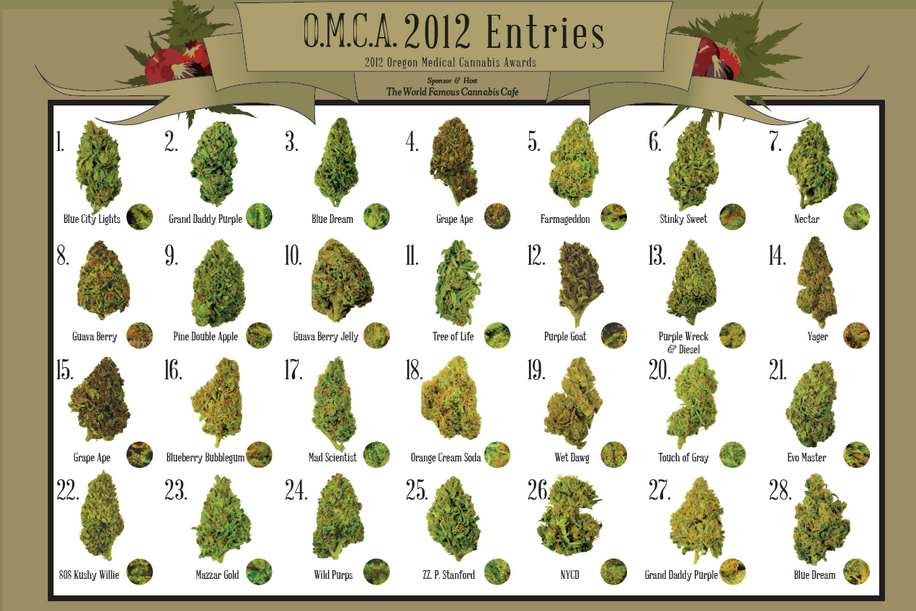This Saturday, December 7th, the World Famous Cannabis Café in Portland, Oregon, is hosting the Oregon Medical Cannabis Awards (OMCA). Now in its twelfth year, the OMCA is unique among cannabis competitions for its rigorous judging criteria, limited entries, and double-blind evaluation. This year, the OMCA also features concentrate judging.
The OMCA was created for patients to help determine the strains of cannabis that will best work for them. Back in 2001 when OMCA was started, there were no helpful cannabis strain websites and few cannabis strain guide books. It was then that Madeline Martinez and the activists at Oregon NORML created the OMCA to fulfill patient needs.
In 2001 the Oregon Medical Marijuana Act (OMMA) only allowed patients to carry an ounce of medicine outside the home. The law also allowed patients and caregivers to exchange up to one ounce of medicine for no remuneration. With these limits in place, OMCA was limited to just 28 entrants, each of whom would supply an ounce of their cannabis, which would then be divided into 28 one gram samples for 28 judges. Even though OMMA was amended later to allow patients 24 ounces, OMCA has stuck with the 28 gram / 28 judges limits, making OMCA an exclusive competition that usually fills up all its judging slots on the first day of submissions.
Another difference with OMCA is the length of judging. At many events, judges are given dozens of strains to try and two or three days to try them. OMCA delivers its judges’ packets a month before the actual contest, with instructions to sample only one strain per day and always using the same method (joint, pipe, vape, etc.) But with only 28 entries and a tight-knit grower community it was too easy for entrants to game the system. Entries were just labeled “A” – “BB” and it wasn’t too hard for judges to collude and throw all their votes toward a particular entry.
That’s when Oregon NORML’s technical director, David Bram, came up with OMCA’s revolutionary judging system. Davis created a method of randomly bar-coding each strain for each judge, 784 codes in total. Thus, Judge #1?s Strain “A” might be “XTY-056? and Judge #2?s Strain “A” might be “USP-729? and nobody but Dave’s computer knows which code matches which strain.
Tallying the 28 judges’ journals was also streamlined. OMCA judges cannabis strains on Appearance, Aroma, Taste, Smoothness, Potency, Medicinal Effect, Onset Time, and Duration. OMCA also anonymously tracks the judges’ medical conditions, so judging results can be matched to particular conditions, helping patients find the right strain for them. In the past, a judge would write “Strain A” in his booklet and record the scores from 1 to 10 for each of the categories. Now, judges remove a barcoded sticker from their strain sample, stick it in the judges journal, and fills in ovals (like a standardized school test) for 1 to 10 on each category.
OMCA is also an end-of-year celebratory event for the cannabis community in Northern Oregon. There is a full day of vending and presentations, including a hemp fashion show. As the awards presentation approaches, Dave runs the judges’ journals through a bar code scanner and attendees can watch live as the 20? projection screen shows the results for each strain as they are tallied. Ribbons are given for first place in each judging category as well as fourth and fifth place overall. Crystal trophies and ribbons are given to the top three overall strains. For more information on the 12th Annual Oregon Medical Cannabis Awards, visit usaworldfamouscannabiscafe.com.

